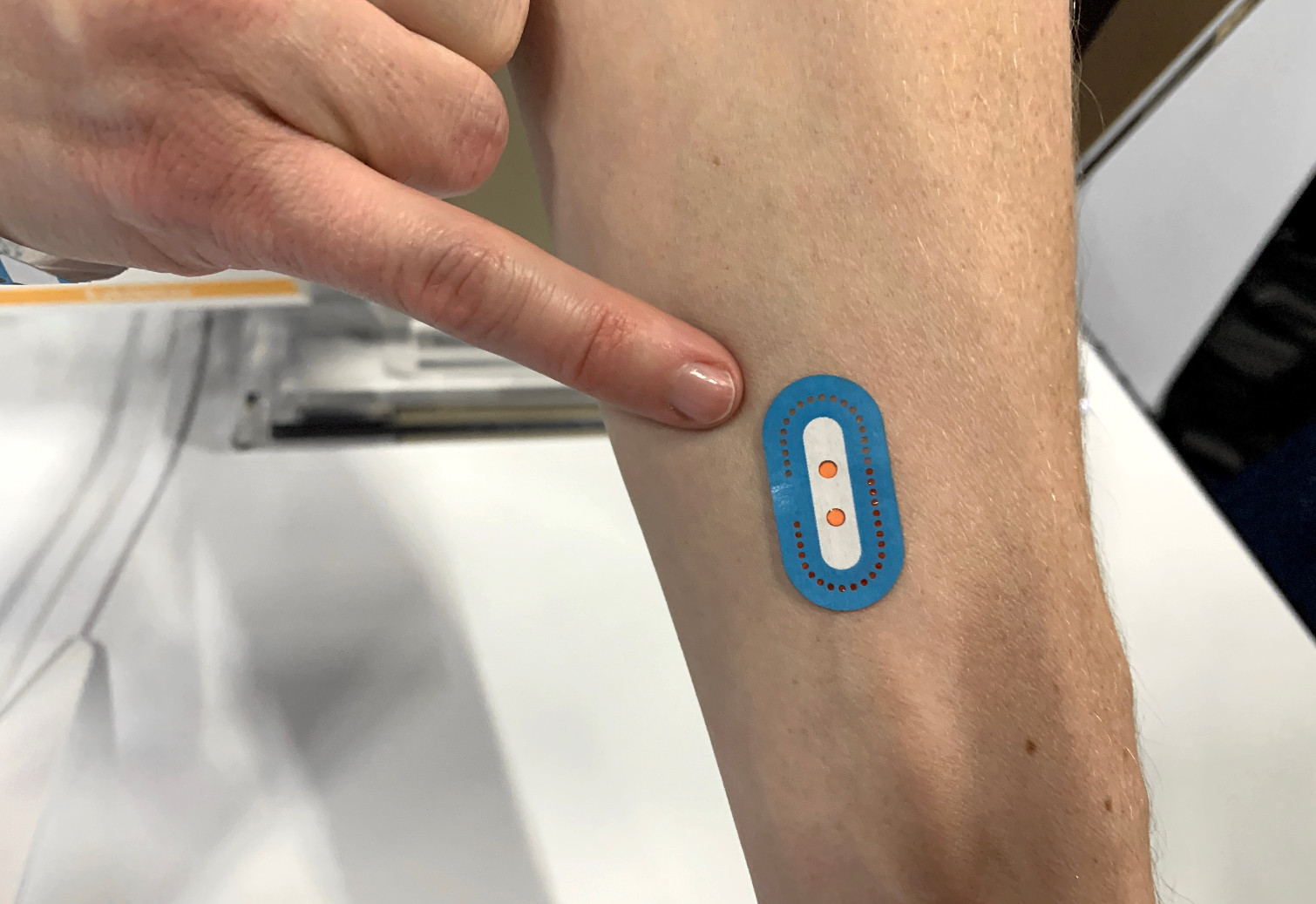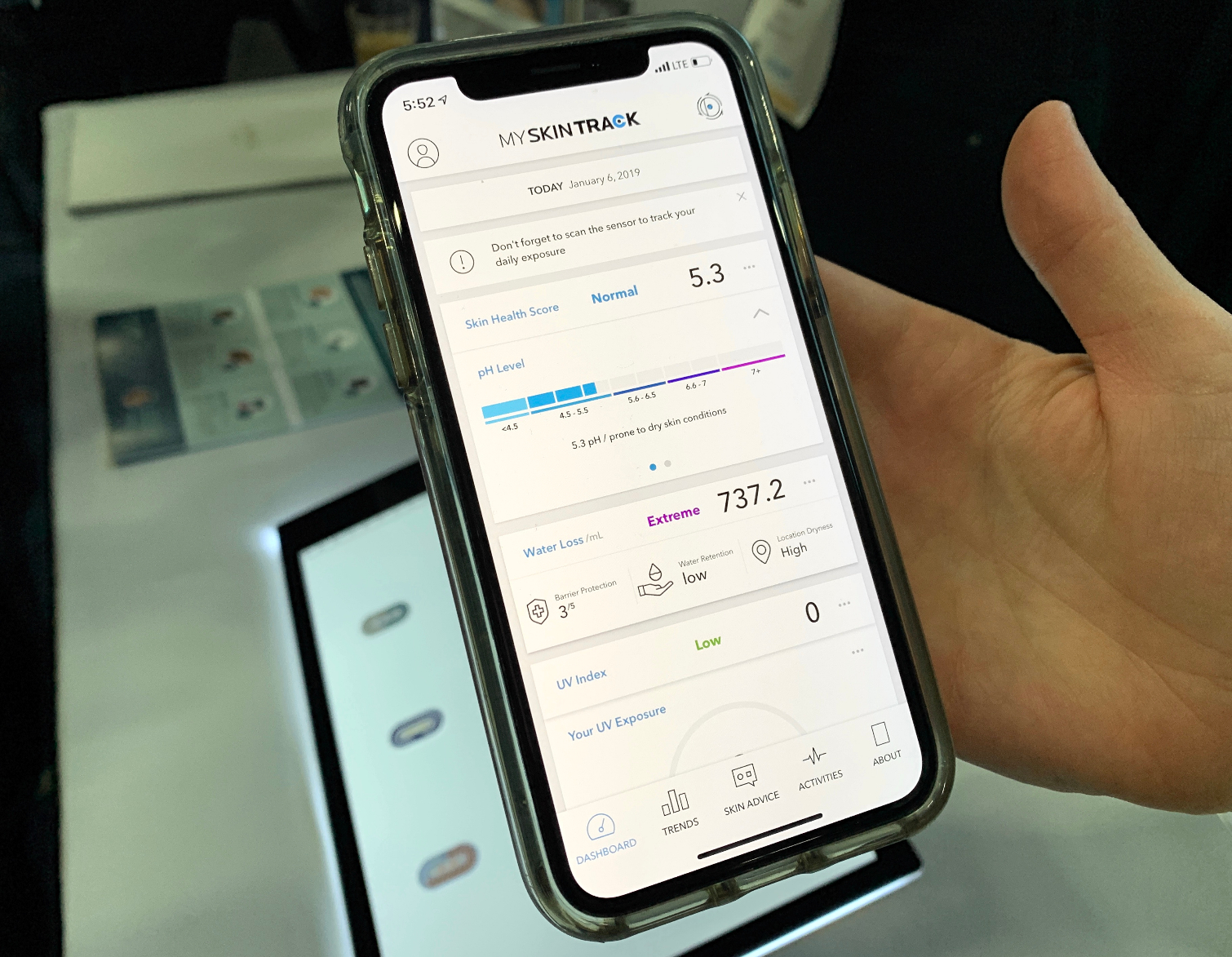L’Oreal’s New pH Sensor Uses Sweat to Detect Skin Conditions
What if your skincare routine was based on a totally customized scientific analysis? That could happen soon.
LAS VEGAS — Creating the perfect skincare routine is like running a chemistry experiment. There are hundreds of serums, moisturizers, face masks and other skincare products on the market that, if used in the right order, promise to cure acne, prevent wrinkles (or reverse them) and give you a glow from the inside out. But figuring out exactly which products work for your skin is a pricey process of trial-and-error. L’Oreal’s new skin sensor, which the company is showing off at CES in Las Vegas, can detect your skin’s pH balance. That data can be used to help you formulate a mixture of products that can heal your biggest skin issues.

The sensor, which L’Oreal with microfluidics company Epicore Biosystems, uses trace amounts of sweat to determine where your pH levels are on a scale of 1 to 14. Normal skin is slightly acidic, hovering at a level between 4.5 and 5.5. If the number is off, it could be a sign of a serious skin condition, eczema and dermatitis.
You stick the sensor on your inner arm, then wait 5 to 15 minutes as the patch measures trace amounts of sweat. Two dots on the sensor change color, which is how you’ll know it’s done measuring. You then take a photo of the sensor with L’Oreal’s My Skin Track pH app, which uses an algorithm to read the skin’s pH measurement and detect sweat loss rate. Both of those data points can reveal how healthy your skin is.

I saw a prototype of the sensor and app at CES, and was impressed by how tiny the sensor strip is. The app tells you your pH level, how much water you’re retaining and your UV exposure.
L’Oreal wants to use that data to craft custom skincare product recommendations from its skincare line, La Roche-Posay, which will help the company sell more serums and creams. But early detection could also prevent people from aggravating their skin conditions with the wrong products.
L’Oreal isn’t selling its skin pH sensor yet. Instead, the company is going to give the device to dermatologists this year to research its effectiveness.
Skincare is big business — in 2017, products ranging from cleansers to moisturizers raked in $5.6 billion in revenue, according to a beauty industry report from NPD Group. But finding the right cocktail of products to use is a crapshoot. If L’Oreal can make that process more scientific, and more personal, they might sell fewer products, but win lifelong customers.
Sign up to get the BEST of Tom's Guide direct to your inbox.
Get instant access to breaking news, the hottest reviews, great deals and helpful tips.
Photos: Tom's Guide
Caitlin is a Senior editor for Gizmodo. She has also worked on Tom's Guide, Macworld, PCWorld and the Las Vegas Review-Journal. When she's not testing out the latest devices, you can find her running around the streets of Los Angeles, putting in morning miles or searching for the best tacos.
